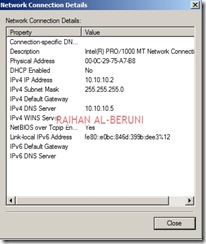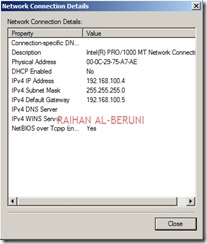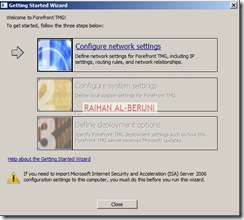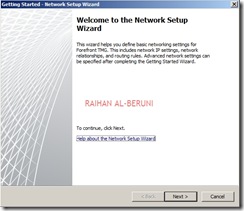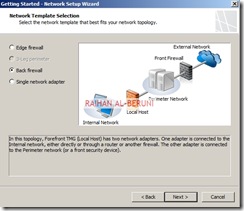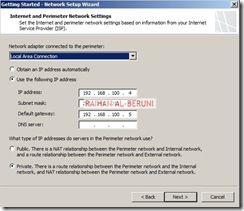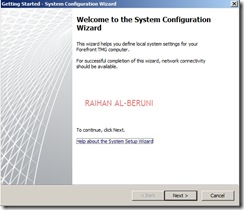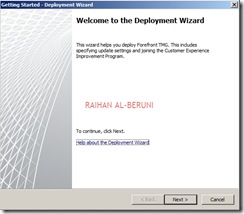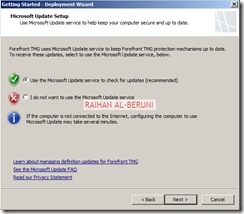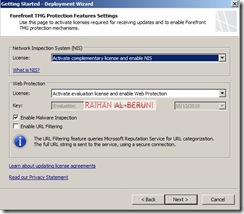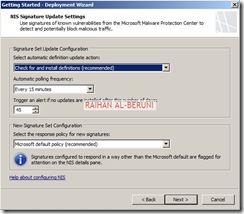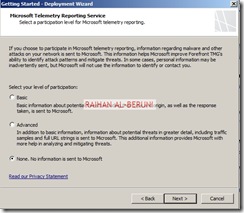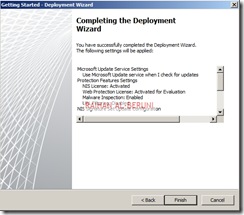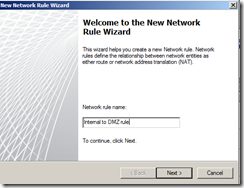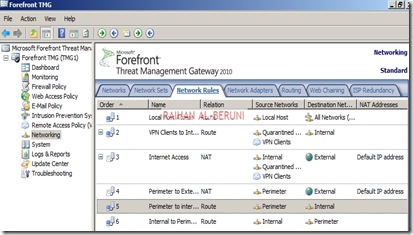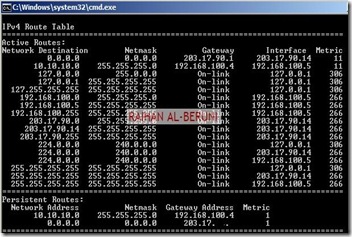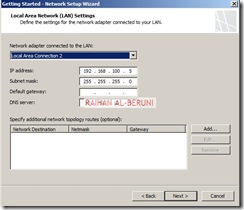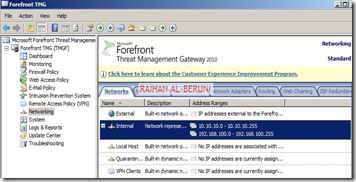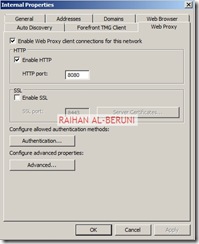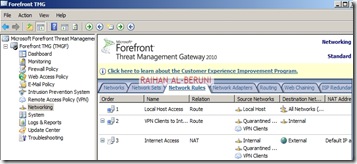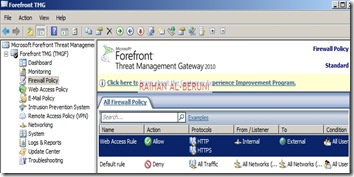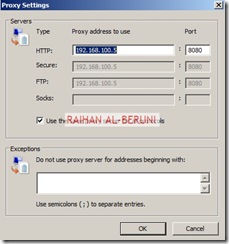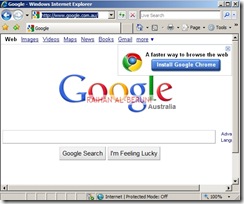TCP/IP is the backbone for communication and transportation in Windows Server, prior to communicating between machines, TCP/IP will need to first be configured. TCP/IP is installed by default in Windows Server 2008 R2 and during the operating system installation you can also add or remove TCP/IP . If a TCP/IP connection should fails, you will need to identify the cause and point of failure. Windows Server ships with several useful tools which can troubleshoot connections and also verify connectivity. In this series of articles we will look at Ping, Tracert, Pathping, IPconfig, Arp, Netstat, Route, Nslookup and DCDiag. Most of the tools are been updated to include switches both for IPv4 and IPv6.
Ping
Ping stands for Packet Internet Groper and can be used to send an ICMP (Internet Control Message Protocol) echo request and echo reply which will verify the availability of local or remote machines. Ping can be thought of as a utility which sends a message to another machine requesting a confirmation if the machine is still there. By default, Ping sends four ICMP packages and awaits for the responses back in one second. This default setting can however be changed and the number of packages sent and the await time for responses can be altered through the options available for Ping.
As well as verifying the availability of remote machines, Ping can assist in determining name resolution issues. To use Ping, go to a command prompt and enter Ping Targetname. Several different parameters are available to be used with Ping. To show all the parameters enter Ping /? or Ping (with no parameters). The parameters for use with the Ping command are as below:
- -4 : Specifies that IPv4 should be used to ping, this is not required for identifying the target machine with a IPv4 address but it will be required only to identify the target machine by name.
- -6 : Specifies that IPv6 should be used to ping, similar to –4 this is not required for identifying the target machine with an IPv6 address but it will be required only to identify the target machine by name.
- -a : Resolves the IP address to the hostname which is displayed if this command is successful.
- -f : Requests that the echo back messages are sent with a Don’t Fragment flag in packets (only available in IPv4).
- -i ttl : Increases the timeout when using slow connections, also sets the value of TTL (Time to Live) the max value for this is 255.
- -j HostList : Routes the packets using the host list (this is a listing of IP addresses which are separated by spaces), hosts can be separated by intermediate gateways (ie loose source route).
- -k HostList : Similar to –j but the hosts can’t be separated by intermediate gateways (ie strict source route).
- -l size : Specifies the length (in bytes) of the packets – default is 32 and the max is 65,527.
- -n count : Specifies the number of packets which are sent – default is 4.
- -r count : Specifies the route for the outgoing and the incoming packets, you can specify a count which is equal to or higher than the number of hops between source and destination. The count must be between 1 to 9.
- -R : Specifies that the round-trip path should be traced (this is only available on IPv6).
- -s count : Sets a time stamp for the number of hops specified by count, this count needs to be between 1 and 4.
- -S SrcAddr : Sets the source address (this is only available on IPv6).
- -t : Specifies that Ping should continue sending packets to the destination until interrupted. To stop and display statistics, press Ctrl+Break. To stop and quit PING, press Ctrl+C.
- -v TOS : Sets the value of the type of service in the packet sent (default for this setting is zero). TOS is specified by a decimal between 0 and 255.
- -w timeout : Sets the time in milliseconds for the packet timeout. If the reply isn’t received before a timeout, the Request Timed Out error message will be shown. The default timeout is four seconds.
- .TargetName : Sets the hostname or IP address of the destination to ping.
Sometimes remote hosts will be configured to ignore all Ping traffic to prevent acknowledgment security reasons. Therefore, the inability to ping a server may not always mean the server is not working.
Tracert
Tracert is typically used to determine the path or route taken to a final destination by sending ICMP packets with varying TTL (Time to Live) values. Every router the packet encounters on the way reduces the value of the TTL by at a minimum of one; invariably TTL is a hop count. The path will be determined by looking at the ICMP Time Exceeded messages returned by the intermediate routers. Not all routers will return Time Exceeded messages for expired TTL values and are therefore not captured by the Tracert tool. In these cases, asterisks are shown for that particular hop. To show the different parameters which are available to be used with Tracert, open the command prompt and enter tracert (with no parameters) to show the help or type tracert /?.
The parameters associated with the Tracert tool are as below:
- -4 : Specifies tracert.exe may only use IPv4 for the trace.
- -6 : Specifies tracert.exe can only use IPv6 for the trace.
- -d : Prevents the resolution of the IP addresses of routers to their hostname, this is typically used speeding up the Tracert results.
- -h maximumHops : Sets the max number of hops taken before reaching the destination – default is 30 hops.
- -j HostList : Specifies that packets must use the loose source route option, this allows successive intermediate destinations to be separated by one or more routers. The max number of addresses in the host list is 9. This is only useful only when tracing IPv4 addresses.
- -R : Sends the packets to the destination in IPv6, using the destination as an intermediate destination and testing reverse route.
- -S : Specifies which source address to use, this is only useful when tracing IPv6 addresses.
- -w timeout : Sets the time in milliseconds to wait for the replies.
Tracert is a good utility for determining the number of hops and also the latency of communications between two end-points. Even when using high-speed Internet connections, if the Internet is congested or if the route a packet needs to follow necessitates forwarding the between several routers along the way, the performance and the latency will cause noticeable delays in communication.
Pathping
The Pathping tool is a route tracing tool which combines features of both the Ping and Tracert commands with some additional information which neither of those two commands provide. Pathping is most suited for a network with routers or multiple routes between source and destination hosts. The Pathping command sends out packets to all routers on its way to a destination, and subsequently gets the results from each packet that is returned from the router. Since Pathping calculates the loss of packets from each hop, it will be easy to determine which router is causing network issues.
To display the parameters in Pathping, open a command prompt and type Pathping /?.
The parameters for the Pathping command are as follows:
- -4 : Specifies tracert.exe may only use IPv4 for the trace.
- -6 : Specifies tracert.exe can only use IPv6 for the trace.
- -g Host-list : Allows for the hosts being separated by intermediate gateways.
- -h maximumHops : Sets the max number of hops prior to reaching a target – default is 30 hops.
- -i address : Uses a specified source address.
- -n : Specifies is unnecessary to resolve the address to the hostname.
- -p period : Sets the number of seconds to wait between pings – default is 0.25 seconds.
- -q num_queries : Sets the query number to each host along the route – default is 3.
- -w timeout : Sets the timeout for replies in milliseconds.


















